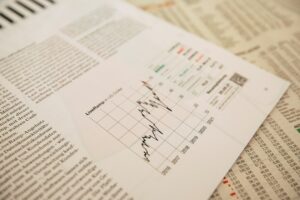Do you often find yourself thinking about your business debt? The way the economy is currently trending, it’s likely that it’s on your mind more frequently than before.
Australia has been fortunate to experience uninterrupted economic growth for almost three decades. This growth has been powered by decreasing interest rates through this time, allowing businesses throughout the country to speculate on innovative strategies and investment expansion plans. More often than not, these ventures have not been backed with enough calculated strategy, but have still fumbled their way to improved outcomes in subsequent years.
Times are changing.
With slowed economic growth and soaring national debt levels, the cost of capital has gained an entirely new significance. Effective debt management has become increasingly vital. Profit must be non-negotiable. This sentiment is echoed by Dominique Lyone of COS Office Supplies, a leading online stationery enterprise and a quintessential Australian success story who recently stated at a conference I attended: “One year of loss is bearable, two years and a small business will fail.”
But why is profit a non-negotiable? Aside from the obvious, it’s because businesses require profits to cover their debts. This could be supplier debt, tax debt, or bank debt.
So, the question is: How do we track and manage our debt?
A practical goal for sustainable leverage is to ensure your EBITDA (operating profit) is at least four times your interest cost. This ratio first and foremost ensures that you can cover not just interest expenses but also principal repayments. Secondly, it ensures that your financing is actively working to improve your return on invested assets. In the event of an unforeseen road bump (Covid/GFC), a 4x coverage ratio would still allow your business to withstand setbacks. Anything less risks pushing the business into a cash loss zone, threatening the very model of your enterprise.
So, what if your business isn’t on track?
First, consider the type of debt you’re dealing with. Begin by determining your total interest cost against total borrowed funds. What’s your average rate? A decent commercial loan is currently around 10-12%. Anything higher, and refinancing may be an option to explore. Ensure that credit card debt is cleared monthly.
If your debt is at commercial rates, then it’s time to evaluate your assets. Could there be an opportunity to liquidate (sell) assets that aren’t contributing to cash generation and use the proceeds to pay down debt? Subsequently, examine your earning potential and your profit and loss statement. Is your gross profit on track? Do you need to reduce overheads?
Maintaining a sustainable debt position in your business is absolutely vital for its longevity and ongoing success. It’s crucial not to underestimate the potential implications of poor debt management and how it can impact your future wealth generation.
If you need assistance with managing your business debt or understanding your financial position, do not hesitate to reach out to us at A&C. We’re here to help.




